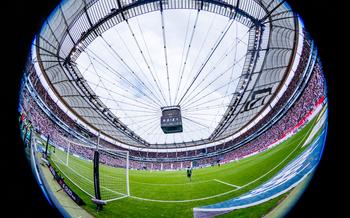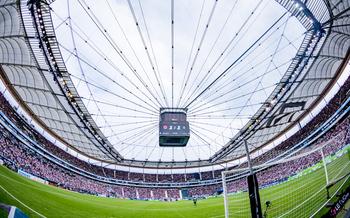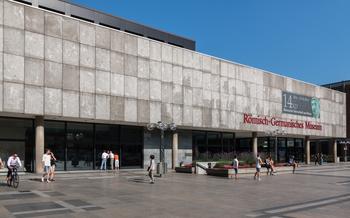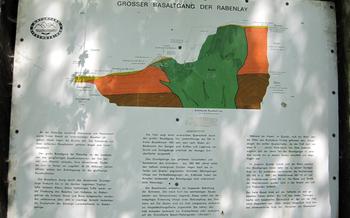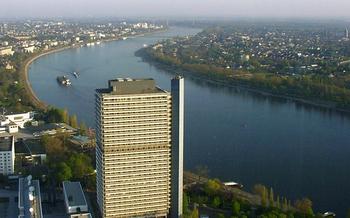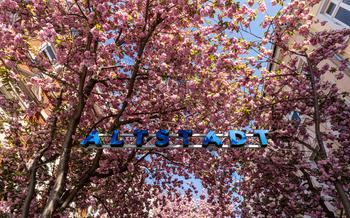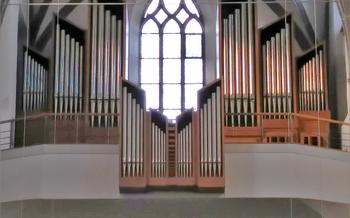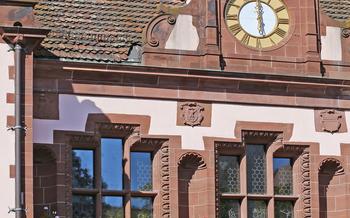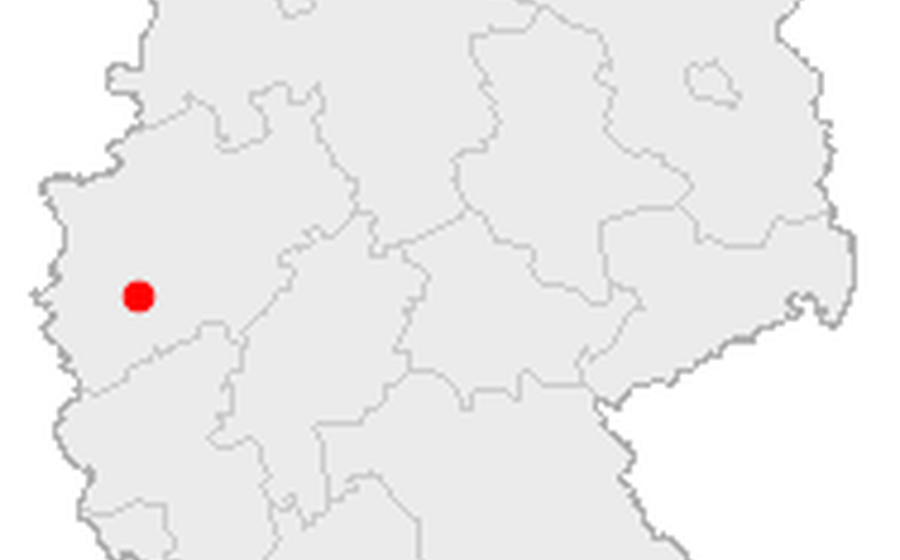
LVR Archeological Park Xanten
- The LVR Archeological Park Xanten: A Journey Through Time
- Unveiling the Roman City of Colonia Ulpia Traiana:
- Exploring the Amphitheater: A Spectacle of Ancient Entertainment
- Strolling Through the Roman Baths: A Sanctuary of Relaxation
- Delving into the Roman Museum: A Treasury of Artifacts
- Unearthing the Roman Villa: A Glimpse into Opulent Living
- Discovering the Mithraeum: Mysteries of an Ancient Cult
- Witnessing the Roman Harbor: Gateway to Trade and Commerce
- Exploring the Roman Aqueduct: Engineering Marvel of Antiquity
- Unearthing the Roman Cemetery: Insights into Funerary Practices
- Immersive Programs and Workshops: Engaging with the Past
- Events and Festivals: A Lively Journey Through Time
- Practical Tips for an Enjoyable Visit:
- Nearby Attractions and Side Trips
- Insider Tip: Discovering Hidden Gems
The LVR Archeological Park Xanten: A Journey Through Time
Nestled in the heart of the Lower Rhine region in Germany, the LVR Archeological Park Xanten unveils a fascinating chapter of Roman history. Established in 1977, the park offers a unique blend of archaeological discoveries, historical reconstructions, and interactive experiences, inviting visitors to embark on a journey through time to the era of the Roman Empire.
With its meticulously reconstructed Roman city, Colonia Ulpia Traiana, the park showcases the grandeur and sophistication of Roman urban planning and architecture. Explore the ruins of the amphitheater, where gladiatorial contests once took place, and immerse yourself in the grandeur of the Roman baths, where ancient rituals of relaxation and rejuvenation were practiced.
The park's extensive Roman Museum houses a treasure trove of artifacts, providing Einblicke into everyday life, art, and culture during the Roman period. Discover the remains of a luxurious Roman villa, offering glimpses into the opulent lifestyle of its inhabitants, and delve into the mysteries of the Mithraeum, a sanctuary dedicated to the ancient cult of Mithras.
Whether you're a history buff, an archaeology enthusiast, or simply seeking a captivating journey through time, the LVR Archeological Park Xanten promises an unforgettable experience. Get ready to uncover the secrets of the Roman Empire and immerse yourself in the grandeur of the ancient world.
Unveiling the Roman City of Colonia Ulpia Traiana:
The LVR Archeological Park Xanten is home to the remarkably preserved remains of the Roman city of Colonia Ulpia Traiana, founded by Emperor Trajan in the early 2nd century AD. Excavations have revealed a wealth of structures, including temples, public buildings, residential areas, and a sophisticated infrastructure. Visitors can marvel at the well-preserved city walls, gates, and towers, which provide a glimpse into the grandeur and scale of this once-thriving Roman settlement.
Archaeological discoveries have shed light on the daily lives of the Roman inhabitants, revealing intricate mosaics, colorful frescoes, and well-preserved artifacts. The reconstruction of certain buildings, such as a Roman house and a temple, offers a tangible connection to the past, allowing visitors to imagine the hustle and bustle of a bustling Roman city. Interactive exhibits and educational programs bring the history of Colonia Ulpia Traiana to life, providing insights into Roman urban planning, architecture, and social customs.
Exploring the Amphitheater: A Spectacle of Ancient Entertainment
Step into the awe-inspiring amphitheater, the centerpiece of entertainment in ancient Colonia Ulpia Traiana. Its elliptical shape and towering stone walls evoke a sense of grandeur and excitement. Imagine the roar of the crowd as gladiators clashed in fierce combat or the thrill of chariot races that tested the limits of human endurance.
The amphitheater's design is a marvel of engineering, with carefully placed arches and buttresses ensuring stability and acoustics. Seating tiers rise steeply from the arena floor, providing spectators with an unobstructed view of the action. Gladiatorial contests were not mere spectacles; they were deeply intertwined with Roman culture, symbolizing strength, courage, and the power of the empire.
While the amphitheater has stood the test of time, ongoing research and preservation efforts aim to restore its former glory. Archaeological excavations continue to uncover artifacts that shed light on the events and rituals that took place within these ancient walls. The LVR Archeological Park Xanten is committed to preserving this iconic landmark, ensuring that future generations can witness the grandeur of Roman entertainment.
Insider Tip:
- Attend one of the immersive events organized by the park, where you can witness mock gladiatorial fights and chariot races, transporting you back to the days of ancient Rome.
Strolling Through the Roman Baths: A Sanctuary of Relaxation
In the heart of the LVR Archeological Park Xanten lies a remarkable complex of Roman baths, offering a glimpse into the ancient world's pursuit of cleanliness and well-being. These well-preserved ruins, dating back to the 1st century AD, served as a sanctuary of relaxation and rejuvenation for the Roman inhabitants of Colonia Ulpia Traiana.
The bathing complex comprised several rooms, each serving a specific purpose. The frigidarium, or cold bath, provided a refreshing start to the bathing ritual. The tepidarium, or warm bath, allowed bathers to gradually acclimate to the heat before entering the caldarium, or hot bath. The caldarium was the centerpiece of the complex, featuring a large pool heated by an ingenious underfloor heating system known as a hypocaust.
Bathing in Roman society was not merely a hygienic practice but also a social and cultural activity. Friends and families gathered in the baths to socialize, gossip, and engage in philosophical discussions. The baths also served as a place for athletes to relax and recover after strenuous training sessions.
The remains of the heating system, with its intricate network of channels and flues, stand as a testament to the engineering prowess of the Romans. The hypocaust system efficiently distributed heat throughout the bathing complex, ensuring a comfortable and luxurious bathing experience.
A visit to the Roman baths in the LVR Archeological Park Xanten transports visitors back in time, offering a tangible connection to the daily lives and customs of the ancient Romans. It's a fascinating glimpse into a world where relaxation and hygiene were held in high regard, and where bathing was not just a necessity but a cherished ritual.
Delving into the Roman Museum: A Treasury of Artifacts
The Roman Museum in Xanten houses a vast collection of artifacts unearthed during excavations at the archaeological park. These precious relics offer a fascinating glimpse into the everyday life, art, and culture of the Roman settlers. From intricate pottery and glassware to bronze figurines and coins, the exhibits showcase the craftsmanship and artistry of the ancient Roman civilization.
Interactive exhibits and multimedia presentations bring the past to life, allowing visitors to engage with the artifacts and learn about their significance. Temporary exhibitions and special events add to the museum's dynamic and engaging atmosphere. Whether you're a history buff, an art enthusiast, or simply curious about Roman culture, the Roman Museum is a must-visit for anyone exploring the LVR Archaeological Park Xanten.
Unearthing the Roman Villa: A Glimpse into Opulent Living
Amidst the sprawling landscape of the LVR Archeological Park Xanten, the remains of a magnificent Roman villa stand as a testament to the lavish lifestyle of the elite during the Roman era. Unearthed through meticulous excavations, the villa offers a glimpse into the architectural grandeur, opulent décor, and luxurious amenities that characterized Roman dwellings of the highest order.
With its sprawling floor plan, intricate frescoes adorning the walls, and mosaic floors depicting scenes of mythological tales, the villa exudes an aura of opulence and refinement. The remains of heating systems, water supply, and elaborate sanitation facilities reveal the advanced engineering prowess of the Romans and their commitment to comfort and hygiene.
Further excavations have uncovered a wealth of artifacts within the villa, shedding light on the daily lives and social status of its inhabitants. Exquisite pottery, bronze sculptures, and imported marble furnishings hint at the wealth and sophistication of the villa's owners. Ongoing research projects delve deeper into the history and significance of the villa, unraveling the stories of the individuals who once resided within its opulent walls.
Discovering the Mithraeum: Mysteries of an Ancient Cult
In the heart of the LVR Archeological Park Xanten lies a hidden gem that transports visitors to the realm of ancient mystery cults – the Mithraeum. Dedicated to the enigmatic god Mithras, this underground temple offers a glimpse into the secretive rituals and beliefs of a once-widespread religion.
The Mithraeum in Xanten is one of the best-preserved examples of its kind in Germany. Its discovery in 1928 unearthed a treasure trove of artifacts, including intricate carvings, sculptures, and frescoes depicting scenes from Mithraic mythology. These findings have shed light on the cult's symbolism and iconography, revealing a complex system of beliefs centered around the god Mithras, his battle with the bull, and his role as a mediator between the earthly and spiritual realms.
Visitors to the LVR Archeological Park can explore the Mithraeum's atmospheric chambers, where flickering torches cast an eerie glow on the walls adorned with mysterious imagery. The guide will explain the significance of the cult's rituals, including the initiation ceremonies and communal feasts, which were believed to ensure the salvation of the faithful.
The Mithraeum in Xanten offers a unique opportunity to delve into the fascinating world of ancient mystery cults. Its well-preserved state and the wealth of artifacts on display make it a must-visit for anyone interested in exploring the religious beliefs and practices of the Roman Empire.
Witnessing the Roman Harbor: Gateway to Trade and Commerce
The Roman harbor in Xanten, strategically positioned along the Rhine River, served as a crucial hub for trade and commerce during the Roman era. The Rhine, a major waterway, facilitated the transportation of goods, people, and ideas, connecting Xanten to distant parts of the Roman Empire.
Excavations at the harbor site have unearthed remnants of harbor facilities, including warehouses, quays, and jetties, providing insights into the bustling maritime activities of the time. These structures, once teeming with traders, sailors, and cargo ships, offer a glimpse into the economic and cultural exchanges that took place in this vital port city.
A reconstruction of a Roman ship, the "Victoria", stands as a testament to the advanced shipbuilding techniques of the Romans. This replica, meticulously crafted based on archaeological evidence, offers visitors a tangible connection to the maritime prowess of the ancient world.
Throughout the year, the park hosts events and demonstrations related to Roman maritime activities. These include reenactments of trading scenes, displays of Roman shipbuilding techniques, and immersive experiences that allow visitors to witness firsthand the vibrant commercial atmosphere of the Roman harbor.
Exploring the Roman Aqueduct: Engineering Marvel of Antiquity
The Romans were renowned for their engineering prowess, and their aqueduct system stands as a testament to their ingenuity. The aqueduct in Xanten, dating back to the 1st century AD, was a marvel of ancient engineering that supplied the city with fresh water from a source located several kilometers away.
The aqueduct consisted of a series of underground channels and elevated sections carried on stone arches. The water source was a natural spring, and the aqueduct followed a gentle gradient to transport the water to the city. The construction of the aqueduct required meticulous planning and precise engineering calculations to ensure a constant flow of water.
The remains of the aqueduct can still be seen today, providing a glimpse into the advanced water management system of the Roman Empire. Visitors can admire the well-preserved stone arches and gain an understanding of the engineering principles behind this impressive feat of ancient technology.
The Roman aqueduct in Xanten is a testament to the Romans' commitment to public health and sanitation. It also serves as a reminder of the enduring legacy of Roman engineering, which continues to inspire modern-day engineers and architects.
Unearthing the Roman Cemetery: Insights into Funerary Practices
Situated beyond the city walls of Colonia Ulpia Traiana lies the Roman cemetery, a poignant testament to the mortality and beliefs of its ancient inhabitants. Within this hallowed ground, archaeologists have meticulously unearthed a trove of artifacts, grave goods, and inscriptions, providing invaluable insights into Roman funerary practices and their conceptions of the afterlife.
The cemetery's layout mirrors the structured organization of Roman society, with distinct sections for different social classes, families, and individuals. Elaborate tombs and mausoleums adorned with intricate carvings and epitaphs mark the resting places of prominent citizens, while simpler graves speak to the lives of ordinary Romans.
Among the most poignant discoveries are the personal belongings buried alongside the deceased, offering glimpses into their earthly lives. Coins, jewelry, pottery, and tools accompany the departed on their journey into the unknown, reflecting their hopes, fears, and aspirations. Inscriptions etched in stone reveal heartfelt expressions of grief, love, and remembrance, immortalizing the bonds that transcended death.
The Roman cemetery at Xanten serves as a poignant reminder of the universality of death and the enduring human desire to honor and remember our loved ones. Its excavated treasures provide a tangible connection to the lives and beliefs of those who once walked these lands, weaving a rich tapestry of human experience that continues to captivate and inspire visitors to this day.
Immersive Programs and Workshops: Engaging with the Past
The LVR Archeological Park Xanten offers a range of immersive programs and workshops that bring the past to life for visitors of all ages. Children can embark on a journey through time, participating in hands-on activities, reenactments, and workshops that teach them about Roman history, crafts, and traditions. They can dress up in Roman costumes, learn to write on wax tablets, and even mint their own coins.
Adults can also join in the fun with workshops on Roman cooking, pottery, and jewelry making. These immersive experiences provide a unique opportunity to learn about Roman culture and traditions while creating their own Roman-inspired masterpieces.
Costumed interpreters and guided tours add to the immersive experience, providing visitors with a deeper understanding of Roman life and customs. These knowledgeable guides lead visitors through the park, sharing stories and anecdotes that bring the ancient city of Colonia Ulpia Traiana to life.
Events and Festivals: A Lively Journey Through Time
The LVR Archeological Park Xanten comes alive during its annual events and festivals, offering visitors a unique opportunity to step back in time and experience Roman life firsthand. These events transport visitors to the bustling streets of ancient Colonia Ulpia Traiana, showcasing the vibrant culture and traditions of the Roman Empire.
One of the most popular events is the annual Roman Market, which takes place during the summer months. During this lively event, the park transforms into a bustling marketplace, complete with stalls selling authentic Roman goods, artisans demonstrating their crafts, and street performers entertaining the crowds. Visitors can sample traditional Roman cuisine, watch gladiatorial fights, and even take part in chariot races.
Another highlight is the Roman Festival, held each year in September. This three-day festival features a variety of events and activities, including theatrical performances, reenactments of Roman military drills, and workshops on Roman crafts and traditions. Visitors can learn about the daily lives of Roman soldiers, experience the excitement of a gladiator battle, and even try their hand at archery or chariot racing.
These events and festivals offer a unique and immersive way to engage with the past and bring the Roman world to life. They are a must-attend for anyone interested in Roman history and culture.
Practical Tips for an Enjoyable Visit:
Planning a trip to the LVR Archeological Park Xanten requires careful consideration to ensure a smooth and enjoyable experience. The ideal time to visit is during the spring or fall months when the weather is pleasant and the crowds are smaller. This allows for leisurely exploration without the hustle and bustle of peak tourist season. Aim to allocate at least half a day to fully immerse yourself in the park's attractions. The park is wheelchair-accessible, with designated paths and ramps, making it inclusive for visitors with disabilities. Additionally, the park welcomes well-behaved pets, allowing you to share the historical journey with your furry companion. Leashes are required for pets to ensure the safety and comfort of all visitors.
Nearby Attractions and Side Trips
Beyond the LVR Archeological Park Xanten, the region offers a wealth of historical and cultural attractions. Embark on a scenic cycling tour along the picturesque Rhine River, passing through charming villages and medieval castles. Explore the vibrant city of Cologne, known for its magnificent cathedral, lively nightlife, and world-renowned art museums. Discover the industrial heritage of Düsseldorf, with its modern architecture, bustling markets, and renowned art academy. Take a day trip to Essen, home to the UNESCO World Heritage Site of the Zollverein Coal Mine Industrial Complex, a testament to the city's rich industrial past. With its diverse offerings, the region surrounding Xanten promises an unforgettable journey through history and culture.
Insider Tip: Discovering Hidden Gems
As you wander through the LVR Archeological Park Xanten, keep your eyes peeled for hidden treasures that often escape the notice of casual visitors. Venture off the beaten path and explore the secluded corners of the park to discover secret spots that offer unique perspectives and photo opportunities. Look for the picturesque Roman garden, nestled amidst the ruins, where you can capture the essence of ancient tranquility.
Delve deeper into the Roman Museum, where lesser-known exhibits and artifacts await your discovery. Examine the intricate carvings on a forgotten statue, or decipher the inscriptions on an ancient tablet. These hidden gems provide a glimpse into the lives and culture of the Romans who once inhabited this land.
Indulge your taste buds with an authentic Roman culinary experience at one of the local restaurants in Xanten. Savor the flavors of traditional dishes, prepared with fresh, local ingredients and inspired by ancient recipes. Immerse yourself in the atmosphere of a Roman trattoria, where the aroma of freshly baked bread and the sound of clinking glasses transport you back in time.
With a keen eye for detail and a sense of adventure, you'll uncover the hidden treasures of the LVR Archeological Park Xanten, creating lasting memories of your journey through the Roman past.

